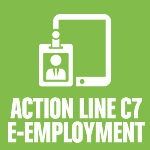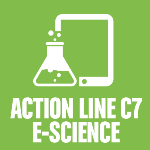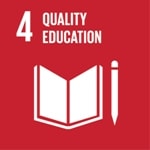Don't just tell them - show them
Chant Newall Development Group

Session 238
Harnessing the power of virtual world learning environments for education and training
Virtual World Learning Environments (VWLEs) are widely used by educators because of their proven ability to stimulate active engagement with the subject, strengthen social interaction, and trigger creative thinking.
They are resource-light, using a fraction of the resources of traditional classroom methods, without negatively impacting on the information or learning objectives, and are also accessible any time of the day and night, regardless of geographical location.
They are also flexible, and can either closely replicate real-world scenarios and environments, or take students to places they would never be able to visit, like the surface of the sun, Easter Island five hundred years ago, or the interior of a human cell.
CNDG has been designing and building 3D Immersive Virtual Worlds Learning Environments in collaboration with its clients for 13 years. In this workshop Dr William Prensky, the CEO of CNDG, will give an overview of the benefits of using VWLEs in education and training. He will explore four successful use-cases in which VWLEs are being used to solve common problems in education, by:
- relieving the heavy financial and physical burden of teaching a very large course;
- boosting enrolment and student satisfaction on a challenging science course;
- increasing student participation in practical experiments;
- enhancing the student experience without significantly increasing the resource burden on both the students and department.
He will then give an in-depth demonstration of a real case in which massive resource burden on a university department has been eased, without any loss in teaching quality or learning retention.
After the demonstration, five faculty members will talk about their experience of teaching within these environments, and take part in a question and answer session. The panel will beam-in to join the workshop live from within a Virtual World campus.
Workshop attendees will be also invited to the connected exhibit where they can try out these environments first hand.
Moderator
Dr William Prensky, CEO, CNDG
Speakers/Panellists
Dr Joe Calhoun, Director of Stavros Center for Economic Education, Florida State University
Dr Stephanie Dillon, Director of Freshman Chemistry Laboratories, Florida State University
Dr William Landing, Professor of Oceanography, Department of Earth, Ocean, and Atmospheric Science, Florida State University
Ms Ann Rovetto, Retired - Department of Computer Technology, Horry-Georgetown Technical College, Conway, South Carolina
Ms Michele Yeargain, Laboratory Course Coordinator, Department of Biology, University of Central Florida
Session's link to WSIS Action Lines
-
 C7. ICT Applications: E-learning
C7. ICT Applications: E-learning
-
 C7. ICT Applications: E-employment
C7. ICT Applications: E-employment
-
 C7. ICT Applications: E-science
C7. ICT Applications: E-science
In our session, we will demonstrate how the use of VWLEs in education and training will play a key role in transforming e-education and global collaboration. VWLEs are particularly useful for:
- Distance learning, when geographical distance can leave students feeling isolated and uninspired. VWLEs allow students, faculty, teaching assistants and facilitators to work together in real time. They are able to communicate in voice and in text chat, share documents and videos and presentations, and manipulate the environment to accomplish tasks;
- Reducing the financial and staffing burden on institutions without compromising the effectiveness or perseverance of education. Most research examining the technology’s effectiveness have found that it reduces the time taken to learn, decreases the number of trainee errors, increases the amount learned, and helps learners retain knowledge longer than traditional methods;
- Encouraging networking and collaboration. Shared scenarios can allow users to practice individual actions and communication within a group in a unique way. Shy students find communicating with others much easier when using an avatar in a VWLE, allowing them to contribute their ideas and enjoy learning more;
- Teaching and practicing skills and behaviours in a safe, cost-effective and risk-free environment. VWLEs are already used for chemistry experiments, flight simulation, firefighter training, medical response training, and a host of other potentially dangerous learning processes;
- Training users to develop self-learning and self-development capacities. VWLEs allow users to practice and test themselves over and over again until they are confident.
We believe these qualities speak to the WSIS Action Lines on e-learning (C7/17), e-health (C7/18) and e-employment (C7/19).
Session's link to Sustainable Development Process
-
 Goal 4: Ensure inclusive and equitable quality education and promote lifelong learning opportunities for all
Goal 4: Ensure inclusive and equitable quality education and promote lifelong learning opportunities for all
With reference to sections 6 and 10 above, we are confident that VWLEs will play a significant role in achieving Goal 4: Ensure inclusive and equitable quality education and promote lifelong learning opportunities for all.